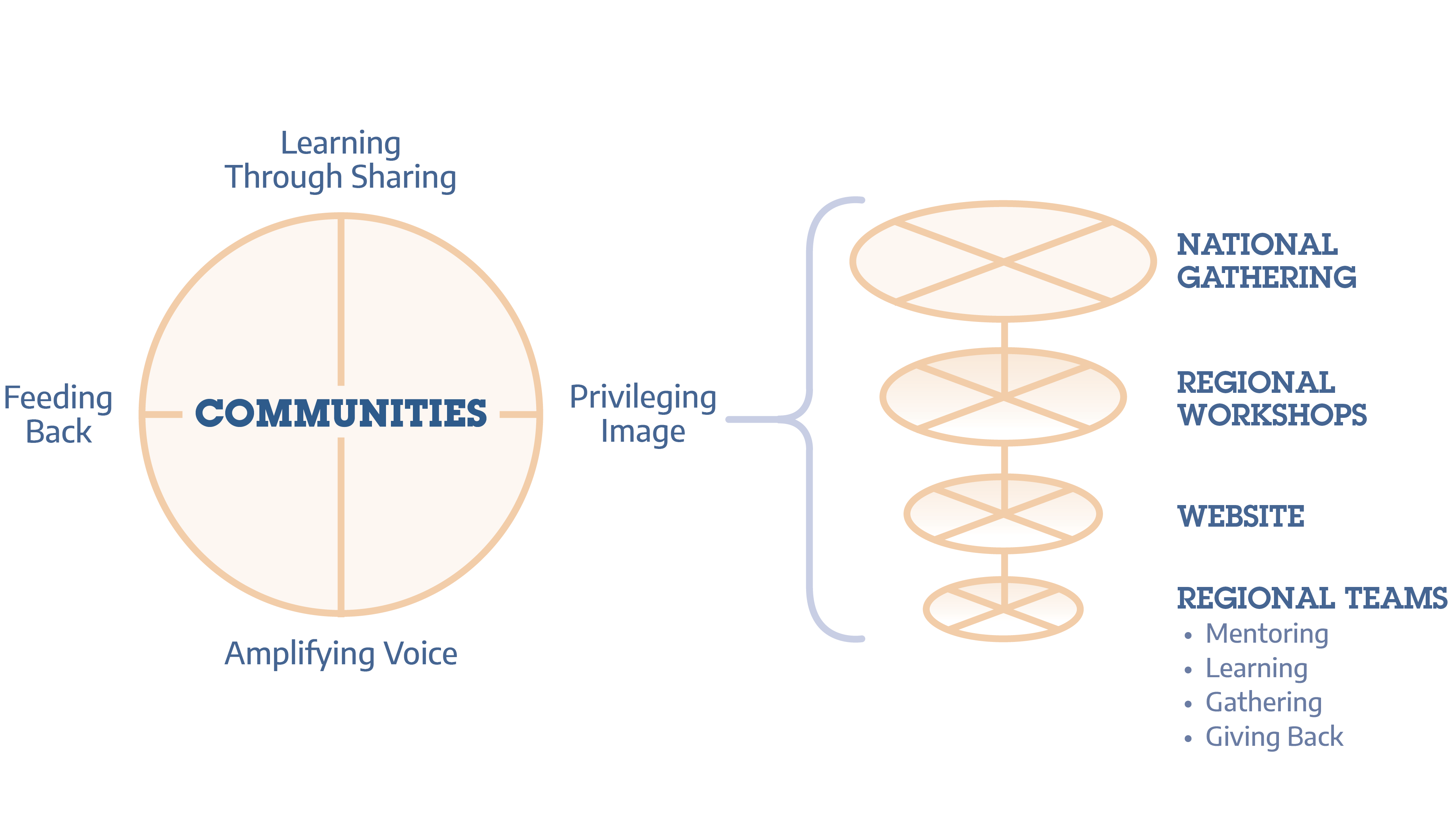What Do We Do?
The Centre offers a variety of sharing and learning experiences for both Indigenous and non-Indigenous learners of all ages:
- Regional teams worked to develop relationships with communities and organizations, gain approval to gather stories about Indigenous education, and to collaborate on teaching resources and videos;
- The NCCIE website is a virtual meeting place that amplifies Indigenous voices to strengthen Indigenous education;
- Individuals are able to search the website and learn about the diversity of Indigenous educational programs and experiences across Canada;
- Regional teams and communities have organized regional workshops, offering opportunities for people to meet in various locations across the country and discuss, in person, important issues pertaining to Indigenous education that are relevant to the area;
- NCCIE has organized national gatherings, bringing together Elders, youth, students, community members, and parents to celebrate Indigenous education across Canada and to meet and learn from each other across the generations;
- NCCIE has been a capacity-building experience for students, youth, and community members who have been hired to gather the stories and collaborate with Indigenous partners. They have received training and mentoring to develop skills in conducting interviews, in working with technology, in following cultural protocols, and more.

This diagram is based on work by Dr. Mark S. Dockstator for: First Nations Regional Longitudinal Health Survey (RHS) 2002/03: The People’s Report (pages 8, 10; footnote 6).
Indigenous Languages
The importance of one’s language in passing on knowledge is central to Indigenous education everywhere. Language is grounded in the lands where it is spoken and is integral to understanding Indigenous ways of knowing and being.
NCCIE is dedicated to privileging Indigenous languages in support of efforts to sustain them and people’s abilities to converse and understand when listening to them.
“Hear Indigenous Languages” was a pilot project in the Centre’s second year, which aimed to translate ten stories about Indigenous education programs into a number of Indigenous languages. At the click of a button, you are able to listen to and learn about these ten educational programs in a language of your choice.
Year One
During NCCIE’s first year:
- 17 different regional teams were established across Canada;
- Ethics and community approvals were obtained;
- Over 100 students, youth and community members were hired as regional interviewers, assistants and information technology support;
- Capacity-building and training sessions were provided to regional teams for interviewing and working with the digital equipment;
- Over 300 stories were gathered;
- 10 regional workshops were organized; and,
- 1 National Gathering was held.
Year Two
During its second year, NCCIE’s aims included:
- Working to establish new relationships and develop regional teams in parts of Canada not yet reached;
- Growing the NCCIE library of stories about Indigenous education programs and initiatives;
- Pursuing a project to highlight Indigenous languages;
- Completing an Indigenous governance project that First Nations University began in 2009; and,
- Developing the ‘Knowledge Space’ with kêhtê-ayak (the Elders’ Circle) at First Nations University of Canada.
Year Three
During its third year, NCCIE focused on giving back to communities, honouring the principle of reciprocity as a way of expressing NCCIE’s gratitude for contributions to the project in previous years. Indigenous partners were invited to lead and direct a project of their choosing. They were asked to identify a need in their community’s learning resources. Then they collaborated with NCCIE on a community-led process to fill that need by developing lesson plans, videos, or other learning tools. The Teaching Resource Centre was launched in the summer of 2020.
In addition, the following work was completed:
- Over 600 stories about Indigenous education initiatives, gathered during the project’s first two years, are now available on the website;
- Over 80 lesson plans and more than 40 original videos are now available in the Teaching Resource Centre;
- The Resource Library has over 300 entries;
- And more.
Year Four
RAISING AWARENESS ABOUT NCCIE
In NCCIE’s fourth year, the project endeavoured to raise awareness about the wealth of knowledge and resources available on the website and to support user experience and navigation. NCCIE’s regional teams have hosted webinars and workshops across Canada to inform school districts, First Nations, teachers and teachers-in-training – and anyone interested in learning about Indigenous education – about the project and the multitude of resources on the website.
Other initiatives during this fourth year have included:
- the creation of a searchable database with links to YouTube and other videos that explore Indigenous knowledge;
- the hosting of a virtual national gathering.
A final undertaking was to document the four years of the NCCIE project with the aim of articulating key learnings and recommendations from regional teams and community partners to help strengthen Indigenous education and languages across the country.

